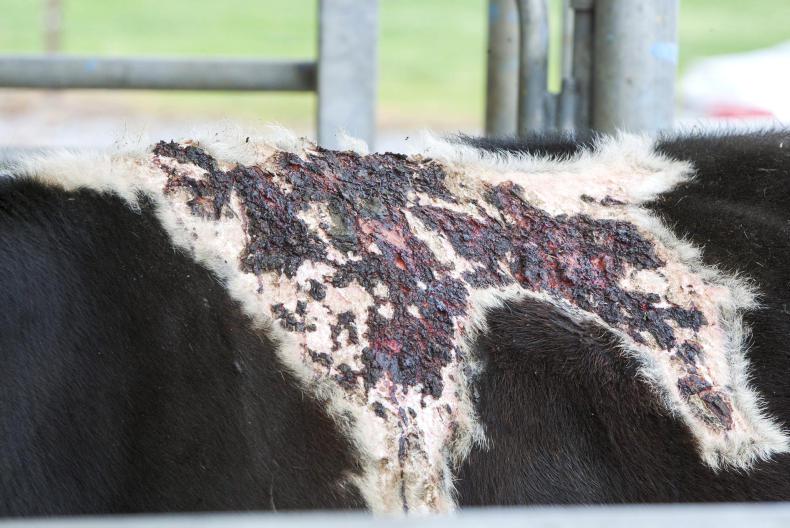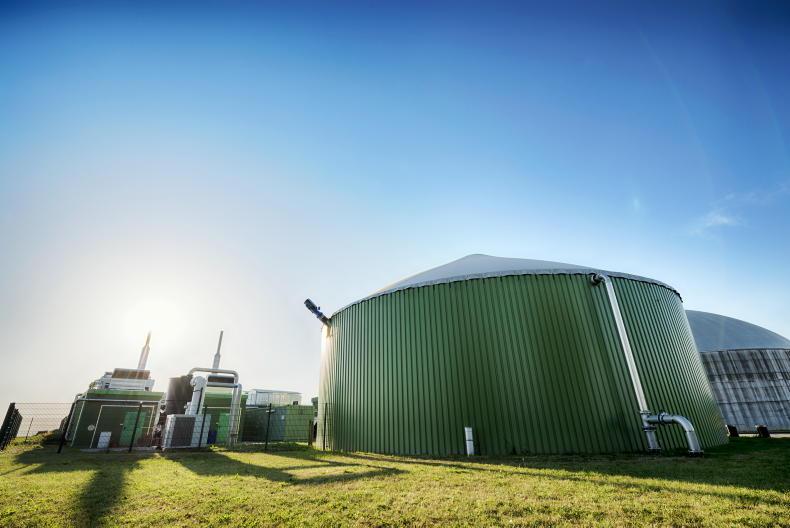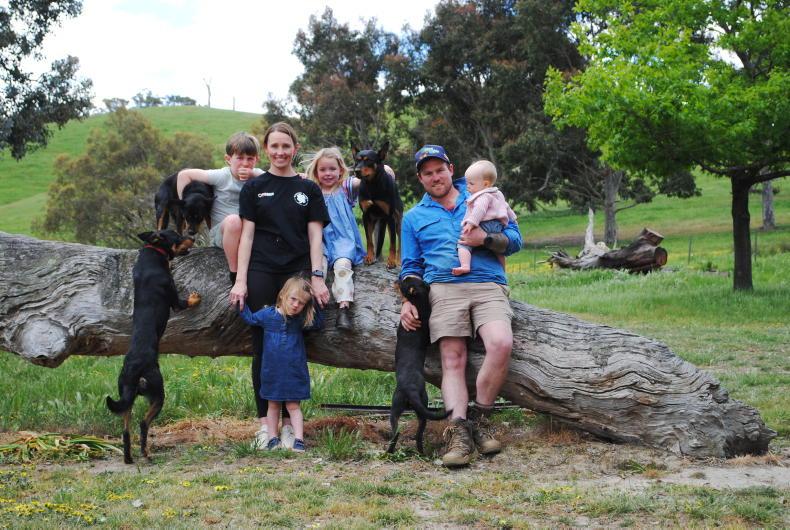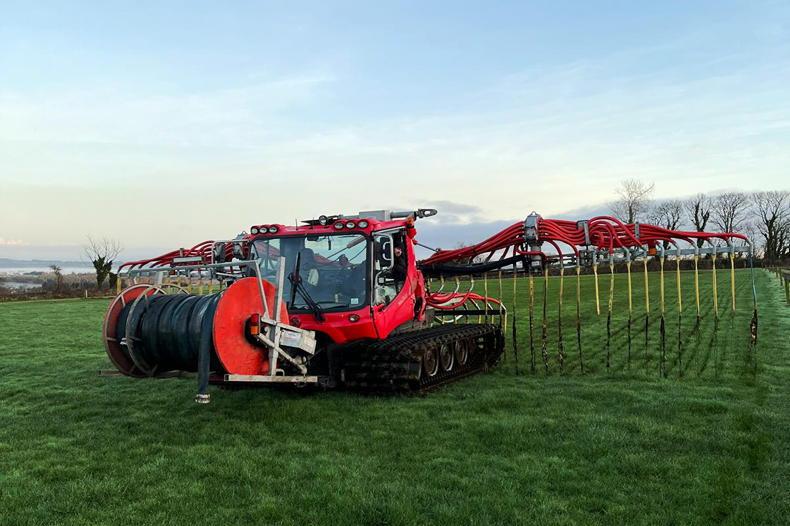Standing alone in the field, twitching their tail uncomfortably – this is a common sign of ailment in cows or heifers during the summer months. On further inspection, a reddened muzzle and swelling around the head and back end can sometimes be seen. When brought in, they may move slowly and seem like they are in pain. These heifers can often appear lame or like they are walking on hot coals. These are just some of the signs that may alert you to a condition often seen in the summer months called photosensitisation. In severe cases, the condition can sometimes be seen on cow’s skin. With a few reported and suspected cases over the last 10 days, we look at this disease’s symptoms, treatments and options for prevention.
What is happening?
Photosensitisation primarily affects the skin of cows to varying degrees and in some severe cases, the skin can flake and peel away. A photodynamic agent or substance gets to the skin and this reacts with UV light or sunlight, causing the reaction we often see. In my opinion, there has been a notable increase in cases of photosensitisation over the last six to eight years.
The first cause of photosensitisation is when the cow ingests a plant containing photodynamic agents, the common one being St Johns Wort. This is what we refer to as primary disease. The second cause is genetic, when cows with lighter pigments in their skin have a reaction to UV light or sunlight. A third cause can be liver damage, particularly liver fluke. The normal metabolism of grass and chlorophyll is disrupted, leading to more photodynamic agents in the skin.
Finally, there can be some cases with no known reason. This is often described as idiopathic photosensitisation.
Symptoms
When these photodynamic agents get into skin and react with sunlight, they release potent substances called free radicals, which cause local swelling. This accounts for the pain and uneasiness of the animal and also the inflamed and reddened skin. In dairy cows, you can see severe milk drop and these affected cows will seek out the shade. In bad cases, the affected skin can slough or peel off, usually affecting areas of skin without pigment, white areas or around the nose, muzzle, vulva and teats. A common sign is vigorous tail shaking and swishing, and cows can also run a high temperature. I have only encountered one herd breakdown, with five cows affected over one week and we suspected it was something toxic they had eaten.
Sunburn and infections with mycotoxins can give cows similar symptoms. The bull and young stock are also susceptible to this disease. Bulls that have been affected, will often become infertile for six to eight weeks.
Treatments
The first recommended step is removing the animal from UV light exposure for 10-14 days, by bringing them indoors. The next step is to manage the pain and inflammation in the skin.
This can be done with anti-inflammatory drugs. Sometimes it will be recommend to use steroids to reduce the reaction, but these can’t be given to animals that are pregnant. Always get a second opinion when there is a lot of skin damage and peeling as some of these cows will require antibiotics to control infections. In severely affected animals, I use emollient creams available to buy cheaply in large containers. Once the above treatment is followed, animals will make a slow but full recovery.
Control
Occasional cases of photosensitization are normal or might be expected, but it is very important if you see multiple cases to ask why. With farms experiencing more cases of photosensitisation, I’ll always potentially walk the fields looking for suspect plants and also looking carefully at liver fluke control on the farm. Remember, factory reports are available this year and are an excellent reference for liver fluke activity on the farm. In other countries where herd issues have been reported, I’ve read about supplementing herds with zinc. Photosensitisation remains an isolated problem on most farms, where symptoms are spotted quickly.
New leptospirosis vaccine hits the Irish market
Over the last number of months, farmers will be aware of shortages of lepto vaccines in the Irish market. Leptospirosis is endemic in many herds, which means the bacteria is commonly present. It is my long-held view that the disease can affect both you and your cows. This vaccination is a must for Irish farmers and their herds. The disease can cause high temperatures, milk drops and abortions at cow and herd level. The risk period was thought to be at grazing time, but potentially is an all-year-round issue/risk. It can also be shed in urine, affecting humans, making it a zoonotic disease.
With the current two vaccines on the market out of stock, farmers now have an option to purchase BioBos L, a lepto vaccine brought into Ireland by Co-operative Animal Health and Glanbia. Glanbia vet Shane McElroy has verified that the BioBos L product meets the required quality, efficacy and safety standards to protect animals from the bacterial disease
Farmers who haven’t vaccinated yet this year, can now use this vaccine as part of their herd control plan. Heifers require two doses to begin with, while cows and animals previously vaccinated will only require one shot.
Should I wait for my own product to come back into stock?
Each farmer can find out when the two existing products will be back in stock. Every month that passes increases the risk and realistically, if the gap between doses is greater than 16 to 18 months, then you need to consider starting a primary dose of two shots again.
So, if you can’t get other alternatives in the next six weeks, a discussion must be had around the alternative product on the market.
Should I vaccinate while
breeding?
The advice from Glanbia is to vaccinate now during breeding, asking the question: why wait and increase the risk? I think this risk is farm specific and, where possible, farms can vaccinate or some could wait until the main bulk of breeding is done for another month. As time goes on, the risk does increase but the risk is lower in closed herds that have had the previous vaccine administered. Heifers are the priority right now and can be vaccinated straight away.
Each farmer needs to talk about the timing of vaccines with their own vet, who can decide the risk and best options for their herd.
Long-term, farmers need to decide what brand they move forward with. It seems with lepto vaccines you can move between brands in situations where supply issues arise.
However, this is a complication most farmers would be happy to do without.
Standing alone in the field, twitching their tail uncomfortably – this is a common sign of ailment in cows or heifers during the summer months. On further inspection, a reddened muzzle and swelling around the head and back end can sometimes be seen. When brought in, they may move slowly and seem like they are in pain. These heifers can often appear lame or like they are walking on hot coals. These are just some of the signs that may alert you to a condition often seen in the summer months called photosensitisation. In severe cases, the condition can sometimes be seen on cow’s skin. With a few reported and suspected cases over the last 10 days, we look at this disease’s symptoms, treatments and options for prevention.
What is happening?
Photosensitisation primarily affects the skin of cows to varying degrees and in some severe cases, the skin can flake and peel away. A photodynamic agent or substance gets to the skin and this reacts with UV light or sunlight, causing the reaction we often see. In my opinion, there has been a notable increase in cases of photosensitisation over the last six to eight years.
The first cause of photosensitisation is when the cow ingests a plant containing photodynamic agents, the common one being St Johns Wort. This is what we refer to as primary disease. The second cause is genetic, when cows with lighter pigments in their skin have a reaction to UV light or sunlight. A third cause can be liver damage, particularly liver fluke. The normal metabolism of grass and chlorophyll is disrupted, leading to more photodynamic agents in the skin.
Finally, there can be some cases with no known reason. This is often described as idiopathic photosensitisation.
Symptoms
When these photodynamic agents get into skin and react with sunlight, they release potent substances called free radicals, which cause local swelling. This accounts for the pain and uneasiness of the animal and also the inflamed and reddened skin. In dairy cows, you can see severe milk drop and these affected cows will seek out the shade. In bad cases, the affected skin can slough or peel off, usually affecting areas of skin without pigment, white areas or around the nose, muzzle, vulva and teats. A common sign is vigorous tail shaking and swishing, and cows can also run a high temperature. I have only encountered one herd breakdown, with five cows affected over one week and we suspected it was something toxic they had eaten.
Sunburn and infections with mycotoxins can give cows similar symptoms. The bull and young stock are also susceptible to this disease. Bulls that have been affected, will often become infertile for six to eight weeks.
Treatments
The first recommended step is removing the animal from UV light exposure for 10-14 days, by bringing them indoors. The next step is to manage the pain and inflammation in the skin.
This can be done with anti-inflammatory drugs. Sometimes it will be recommend to use steroids to reduce the reaction, but these can’t be given to animals that are pregnant. Always get a second opinion when there is a lot of skin damage and peeling as some of these cows will require antibiotics to control infections. In severely affected animals, I use emollient creams available to buy cheaply in large containers. Once the above treatment is followed, animals will make a slow but full recovery.
Control
Occasional cases of photosensitization are normal or might be expected, but it is very important if you see multiple cases to ask why. With farms experiencing more cases of photosensitisation, I’ll always potentially walk the fields looking for suspect plants and also looking carefully at liver fluke control on the farm. Remember, factory reports are available this year and are an excellent reference for liver fluke activity on the farm. In other countries where herd issues have been reported, I’ve read about supplementing herds with zinc. Photosensitisation remains an isolated problem on most farms, where symptoms are spotted quickly.
New leptospirosis vaccine hits the Irish market
Over the last number of months, farmers will be aware of shortages of lepto vaccines in the Irish market. Leptospirosis is endemic in many herds, which means the bacteria is commonly present. It is my long-held view that the disease can affect both you and your cows. This vaccination is a must for Irish farmers and their herds. The disease can cause high temperatures, milk drops and abortions at cow and herd level. The risk period was thought to be at grazing time, but potentially is an all-year-round issue/risk. It can also be shed in urine, affecting humans, making it a zoonotic disease.
With the current two vaccines on the market out of stock, farmers now have an option to purchase BioBos L, a lepto vaccine brought into Ireland by Co-operative Animal Health and Glanbia. Glanbia vet Shane McElroy has verified that the BioBos L product meets the required quality, efficacy and safety standards to protect animals from the bacterial disease
Farmers who haven’t vaccinated yet this year, can now use this vaccine as part of their herd control plan. Heifers require two doses to begin with, while cows and animals previously vaccinated will only require one shot.
Should I wait for my own product to come back into stock?
Each farmer can find out when the two existing products will be back in stock. Every month that passes increases the risk and realistically, if the gap between doses is greater than 16 to 18 months, then you need to consider starting a primary dose of two shots again.
So, if you can’t get other alternatives in the next six weeks, a discussion must be had around the alternative product on the market.
Should I vaccinate while
breeding?
The advice from Glanbia is to vaccinate now during breeding, asking the question: why wait and increase the risk? I think this risk is farm specific and, where possible, farms can vaccinate or some could wait until the main bulk of breeding is done for another month. As time goes on, the risk does increase but the risk is lower in closed herds that have had the previous vaccine administered. Heifers are the priority right now and can be vaccinated straight away.
Each farmer needs to talk about the timing of vaccines with their own vet, who can decide the risk and best options for their herd.
Long-term, farmers need to decide what brand they move forward with. It seems with lepto vaccines you can move between brands in situations where supply issues arise.
However, this is a complication most farmers would be happy to do without.










SHARING OPTIONS